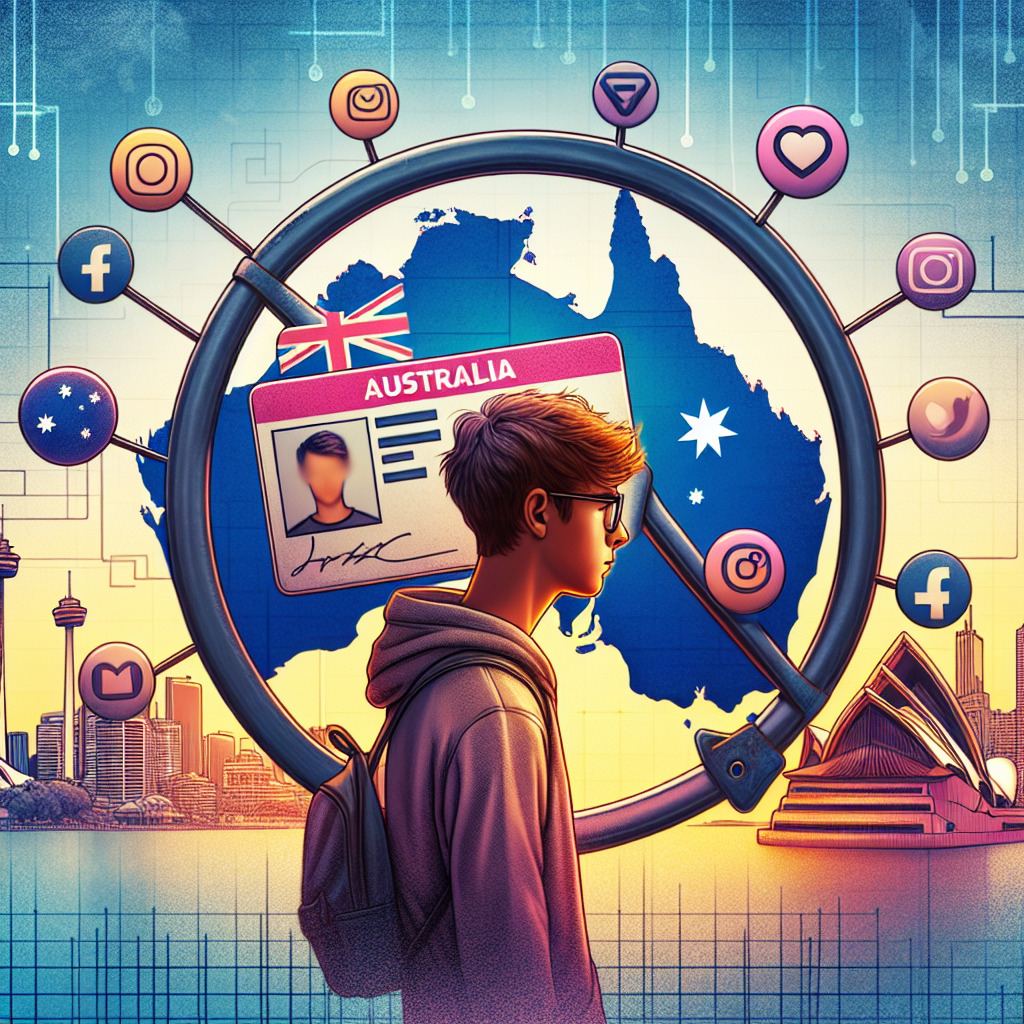Key Takeaways
– Australia introduces social media restrictions for under-16s.
– Risks: Fake IDs could undermine policy effectiveness.
– Challenges for parents and platforms in enforcing rules.
## Introduction
In recent years, the digital landscape has become a central part of adolescents’ lives, presenting both advantages and potential risks. Recognizing the impact social media can have on younger audiences, Australia has taken a bold step by introducing a social media ban for users under 16. While the initiative aims to protect minors from potential online dangers, it faces a significant threat in the form of fake IDs. This blog post delves into the challenges and implications surrounding this complex issue.
## The Rationale Behind the Ban
### Protecting Young Minds
The decision to ban under-16s from social media platforms stems from genuine concerns about the mental health and safety of younger users. Social media can be a double-edged sword, providing opportunities for connection and learning while also exposing users to cyberbullying, inappropriate content, and privacy issues. By limiting access, Australia aims to prevent these negative experiences and maintain a healthier digital environment for the youth.
### Encouraging Real-World Interaction
Another intention behind this regulation is to foster more in-person interactions among young people. Dependency on social media can limit real-world social skills and emotional intelligence. By imposing age restrictions, the goal is to encourage children and teenagers to form meaningful relationships offline and participate in activities conducive to their physical and mental well-being.
## Fake ID Challenges
### The Rise of Digital Deception
Despite the well-intentioned nature of the ban, a significant obstacle arises in the form of fake IDs. The digital era makes creating and obtaining fake identification documents easier than ever, posing a substantial challenge to enforce age restrictions effectively. Many savvy young users can exploit these tools to bypass the ban, undermining its potential benefits.
### Platform Verification Dilemma
One of the biggest hurdles is the verification process across social media platforms. While some platforms have introduced measures like requiring government IDs or using AI for age verification, these methods are not foolproof. The technology requires constant updates and improvements to stay ahead of increasingly sophisticated fake ID creations. Furthermore, significant resources are required to monitor and manage such verification systems, creating a complex logistical and financial burden.
## Roles of Parents and Guardians
### Educating Children
Parents and guardians play a critical role in enforcing this ban. They can educate their children about the importance of abiding by the restrictions and highlight the potential dangers of social media misuse. Open dialogues about digital safety and responsible online behavior can complement legislative efforts, providing a stronger deterrent against unauthorized social media use.
### Monitoring and Support
Beyond education, parents must also actively monitor their children’s digital activities. Installing parental control software and setting boundaries around device usage are practical steps that can help reinforce the age restrictions. However, parents should balance monitoring with trust, ensuring that children understand these measures are for their protection and not an invasion of privacy.
## Responsibility of Social Media Platforms
### Strengthening Security Measures
Social media platforms have a responsibility to their users, particularly vulnerable groups like under-16s. By collaborating with government authorities, tech companies can enhance their security measures to better enforce age restrictions. Improved algorithms for detecting fake IDs and robust reporting mechanisms can serve as effective tools in this endeavor.
### Policy Transparency
It’s important for platforms to maintain transparency in their policies and practices concerning age verification. Clear communication with users about how their data is used, stored, and verified can build trust and keep platforms accountable. This transparency also ensures that social media companies prioritize user safety over business interests.
## Conclusion
Australia’s ban on social media use for individuals under 16 is a significant step towards safeguarding young audiences in the digital realm. However, the rise of fake IDs presents a formidable challenge that requires a multi-faceted approach involving parents, educators, social media platforms, and government authorities. By working together, these stakeholders can create a safer, more secure online environment that prioritizes the well-being of the younger generation. Implementing effective solutions to thwart digital deception and foster responsible online behavior will ensure that the ban achieves its intended purpose, helping foster a healthier digital ecosystem for all users.

